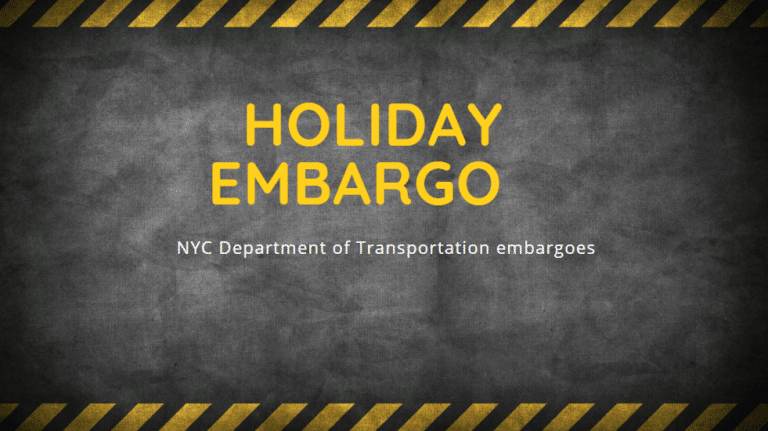Last Updated on March 14, 2025 by Jeffrey Calderon
Exploring the Mysteries of NYC Sidewalk Vaults

Have you seen the mysterious metal structures below NYC sidewalks but don’t know what or why they’re there?
You’ve likely stumbled upon a sidewalk vault.
Sidewalk vaults are underground chambers, typically located beneath street curbs, providing access to major utilities like gas and water.
These vaults are the jurisdiction of the Department of Transportation and the Department of Buildings.
While they have been around since the late 19th century, these vaults remain a mystery to many homeowners, engineers, developers, and architects who encounter them in different facets of their work.
In this blog post, we’ll be taking a closer look at what sidewalk vaults are exactly so that you can gain insight into how these structures may affect your projects going forward.
Vaults beyond the curb may require a Revocable Consent Agreement.
Overview Of NYC Sidewalk Vaults And Their Purpose
New York City sidewalks are an ever-changing landscape, which is now seeing a rise in the utilization of sidewalk vault covers. These dot permits allow companies to utilize the sidewalk in front of their business for various reasons, from storefront expansion to maintenance and repair services.
Generally, a ConEd vault is installed in the sidewalk concrete order for the NYC Department of Transportation to assess whether or not it meets engineering requirements and gives off added public safety warnings.
ConEd vaults can also be installed in the roadway aka “street vault”.
Consequently, these dot vaults become an asset to NYC businesses that require more flexibility with more space available.
Benefits Of Installing A Sidewalk Vault
Installing a Sidewalk Vault in New York City provides additional space for businesses and organizations to store valuable equipment and materials and additional revenue opportunities.
With the additional storage space, businesses can purchase additional products or expand services they can offer with less long-term expense.
Sidewalk Vaults create additional commercial property values and reduce negative environmental impacts.
With less clutter on the sidewalks, pedestrians have more room to walk safely and enjoy the cityscape.
The advantages of installing a Sidewalk or Vault space are numerous, both short-term and long-term while assisting with transforming NYC into a greener city.
When To Install A Sidewalk Vault
A new sidewalk vault should be installed anytime new development or construction is planned.
A new building should have existing sidewalks and a ConEd vault in place long before it is open to the public.
This vital structural component installed early in the new building process helps ensure safety and prevent future accidents due to a missing structure.
The ConEd vault will act as the barrier that keeps people away from hazardous areas while protecting and strengthening surrounding structures.
It’s important to plan when considering installing a new sidewalk vault, as it isn’t only an essential safety device and an improvement of quality of life for those around it.
Ask a pro
Describe Vault Work Being Performed.
ConEd, Building, Repair, New or Abandonment
Requirements To Install A Sidewalk Vault
Installing a sidewalk vault requires DOB approval and engineering review by NYC DOT.
The DOB must approve an excavation for such vault in the Street and Sidewalk.
In addition, engineering review is needed to ensure the strength of the constructed sidewalk vault measured both parallel and perpendicular to withstanding loads.
The types of construction which DOB zoning approvals are required for is steel boxes and concrete slabs that are fitted with access doors and other features meeting DOB standards.
The DOB approval process starts after the registering applicable information on the NYC Department of Buildings DOB NOW filing system.
The DOB approval process then progresses to when a plan is needed which identifies any damage apart from excavation, demolition and installation processes; it also lists bolts or anchors that need to affix the structure securely in place to further prevent any hazards to pedestrians or others nearby as a result of said construction.
How To Apply For A NYC Sidewalk Vault Permit
Applying for a NYC Sidewalk Vault Permit can seem like an intimidating process, but it doesn’t have to be.
With the right resources, you can do it yourself or work with a professional expediter who can walk you through the process.
To do this, start off by submitting an application to Department of Buildings, and then once that is approved, you must schedule a meeting with the Department of Transportation (DOT). At this meeting, DOT will review your project plan and will require additional paperwork once review process has been started.
Cost Of Installing A NYC Sidewalk Vault

The cost of building owners installing a sidewalk vault in New York City can be costly and time consuming, depending on existing conditions.
This usually requires permission from the local Department of Transportation and oftentimes agreements are required with property owners and utilities nearby.
The cost will vary depending on sidewalk vault conditions, the structural integrity of steel members, masonry arches that may have deteriorated and surrounding infrastructure.
You may be able to provide support beams for the existing vault structural framing or you may be forced to replace the existing steel beams entirely.
The installation work also requires highly skilled labor from a licensed general contractor, which of course adds to the overall expense as it is extremely important that everything is properly installed and secured in place.
Last thing building owners want is to end up on the news because their vault collapsed. Delivery vehicles commonly park on vaulted sidewalk vaults, definitely a no-no.

Gaining approvals from all these parties can be cumbersome and costly, but an experienced contractor can make the process much faster and easier for everyone involved.
How Many Different Types of Vaults Are There?
You’re either dealing with a Building vault or a Con Edison vault. Both have structural elements that include steel beams and concrete, both require engineering review from DOB and DOT.
A Con Edison vault is a safe way to transport electrical and telecommunication lines from the public right of way to the building structure. These vaults require gratings on the surface and are normally pre-cast concrete and shipped in whole to the site.
Con Edison Vaults can also be located in the street, not only adjacent to a building.

A Building Vault is a building basement space that extends underneath a public sidewalk.
These sub-terranean spaces have structural framing which include a structural roof and sidewalk topping slab.
The topping slab must be constructed to bear the weight of pedestrian traffic. These also require engineering review from DOB and DOT, often even more stringent than a Con Edison Vault due to its location within public right-of-way.

Due to sidewalk live load requirements, DOT requires the new sidewalk slab to be able to withstand 600lbs per square foot.
How Do Sidewalk Vaults Get Damaged?

The main reason most vaults fail is due to the waterproofing membrane being compromised resulting in water infiltration situations.
Normally, water infiltration happens through the joints in a sidewalk that weren’t properly sealed or patchwork along the perimeter of the vault.
Once water gets in, it contracts and expands with the cold weather, further deepening cracks in the concrete slab that let even more water inside that can also weaken steel members.
These structural elements (structural deck, masonry arches and structural vault) roof must be properly maintained or the vault below will be compromised.
Building owners are required to maintain all vaults that extend from their property.
What Are Sidewalk Vault Lights?

Ever walk through Soho and notice those small, clear glass lenses in the floor? Those are called vault lights. Their original purpose was to let light into basement factories, this was before electricity was abundant.
Frequently Asked Questions
Final Thoughts
NYC Sidewalk Vaults are a great way to increase storage space and convenience in urban areas.
Installing a sidewalk vault has many benefits that businesses can take advantage of.
As a building owner, you should consider installing a Sidewalk Vault if you have an immediate need for expanded storage space or would like to reduce the cost of transporting goods from inventory to production sites.
Make sure you thoroughly understand the requirements of installing a sidewalk vault prior to starting the process to ensure your site meets regulations set by New York City Department of Buildings and Department of Transportation.
After you finally get DOT and DOB approval, don’t forget to apply for separate DOT permits!
What type of vault will you install?





